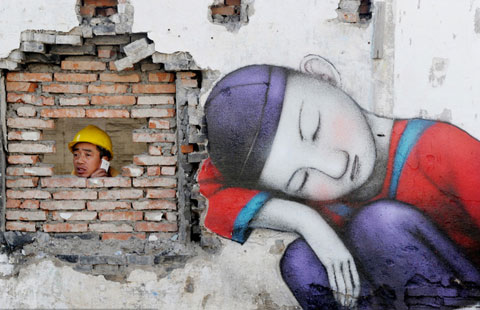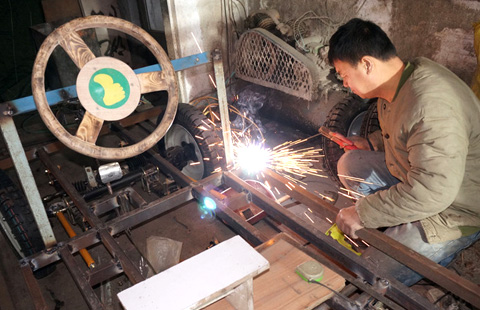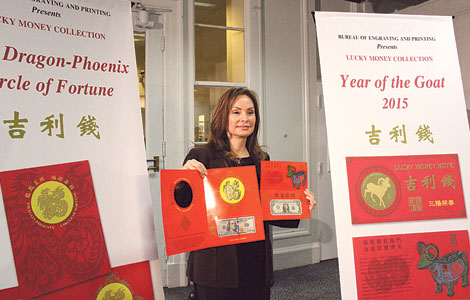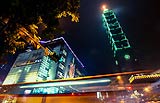Bank of England architect Sir John Soane's models to go on display
Updated: 2014-12-04 14:57
By EDWARD MALNICK(China Daily USA)
|
||||||||
Miniature models collected by the renowned British architect will be unveiled at the Sir John Soane’s Museum next year.
These are some of the models commissioned and acquired by one of Britain’s most influential architects, to form a collection that has remained behind closed doors for more than 160 years.
They include a series of plaster reconstructions of some of the world’s best-known buildings, cork models of ancient ruins in their contemporary state of disrepair and designs used for his own architectural commissions.

Sir John Soane’s collection of 117 architectural models is to go on display to the public for the first time since the room in which it was housed was dismantled after his death in 1850. Soane, who designed the Bank of England and the Dulwich Picture Gallery, used some of the miniature models as teaching tools for his pupils.
They were also a way to transport the classical architecture of far-flung parts of the world and past eras to his busy central London office.
Soane, who was the son of a bricklayer, insisted it was crucial for architects to create models of their designs before construction.
“Many of the most serious disappointments that attend those who build would be avoided if models were previously made of the edifices proposed to be raised,” he said in a lecture at the Royal Academy in 1815.
“No building – at least none of considerable size or consequence – should be begun until a correct and detailed model of all its parts has been made.”
Soane, a neoclassicist, had his office in his home at Lincoln’s Inn Fields near Holborn, which is now a museum of his work.
But the room on the second floor of the building where he displayed his collection of miniature models was taken apart after his death, and much of the collection kept in storage.
Now the museum is to restore the collection – the largest of its kind – and unveil it to the public next year.
It includes 14 miniature cork models that replicate ruins of some of the best-known ancient buildings and other archeological sites in Italy.
The use of cork for creating models of ancient structures had been popular since the 16th century, because the texture of the material is similar to that of weathered stone.
The work of cork model-makers such as Domenico Padiglione, who was based in Naples, was brought to Britain by wealthy travellers as souvenirs of their trips. For Soane, who bought them at salerooms in England, they served as a reminder of his own Grand Tour of Italy between 1778 and 1780 and acted as teaching aides in his role as professor of architecture at the Royal Academy.
The cork models include a large model of Pompeii which belonged to his first pupil, John Sanders.
They contrast sharply with a collection of pristine reconstructions of classical buildings and monuments acquired by Soane in 1834. The 20 plaster models were made by the Parisian model-maker François Fouquet between 1800 and 1830.
They include reconstructions of the Roman Temple of Vesta in Tivoli, Italy, the Parthenon in Athens and the Tomb of Mausolus built at Halicarnassus, now Bodrum in Turkey.
The models created for Soane’s own architectural practice were mainly made of wood. They included a lime wood model of Tyringham, a country house he built for William Praed, a banker and MP, between 1792 and 1800.
In total, 44 models were created for the Bank of England, Soane’s first major commission and his best-known work.
Sir John Soane’s Museum is now seeking donors who will adopt individual models to help fund the reinstatement of the model room.
Abraham Thomas, the museum’s director, said: “The models … are powerful, compelling gateways to other architectural ideas and concepts, to other far-flung sites around the world and across time periods ranging from the ancient world to the contemporary setting of Soane’s Regency world.”

(China Daily USA 12/04/2014 page10)

 Last artistic flourish in neighborhood to be demolished
Last artistic flourish in neighborhood to be demolished
 Parents 'see' through the eyes of their child
Parents 'see' through the eyes of their child
 Carpenter carves armored vehicle from wood
Carpenter carves armored vehicle from wood
 Reclusive old men in the Qinling Mountains
Reclusive old men in the Qinling Mountains
 Greetings from Tibet
Greetings from Tibet
 A buck to the Year of the Goat
A buck to the Year of the Goat
 China-US Internet Forum in DC
China-US Internet Forum in DC
 Shanghai native creates mini car by hand
Shanghai native creates mini car by hand
Most Viewed
Editor's Picks

|

|

|

|

|

|
Today's Top News
Obama upbeat on future of US-China ties
Opening minds through film
Meet an original Bambi artist, 104
Gay dating app in China gains funding
US startup a good fit for China electronics player
93% of Chinese govt websites have security loopholes: report
2014 likely to be warmest year
Blending of cultures benefits world
US Weekly

|

|








